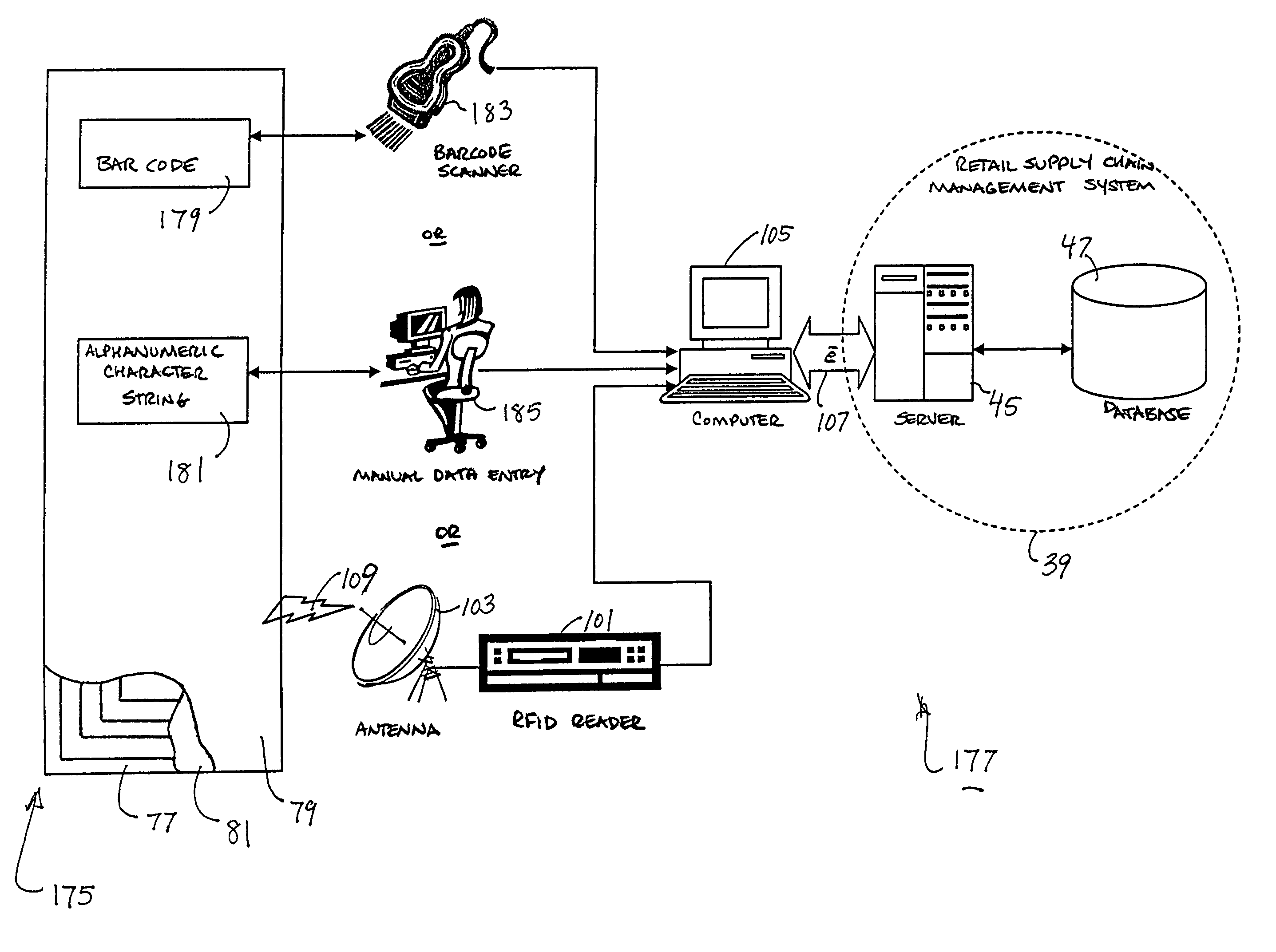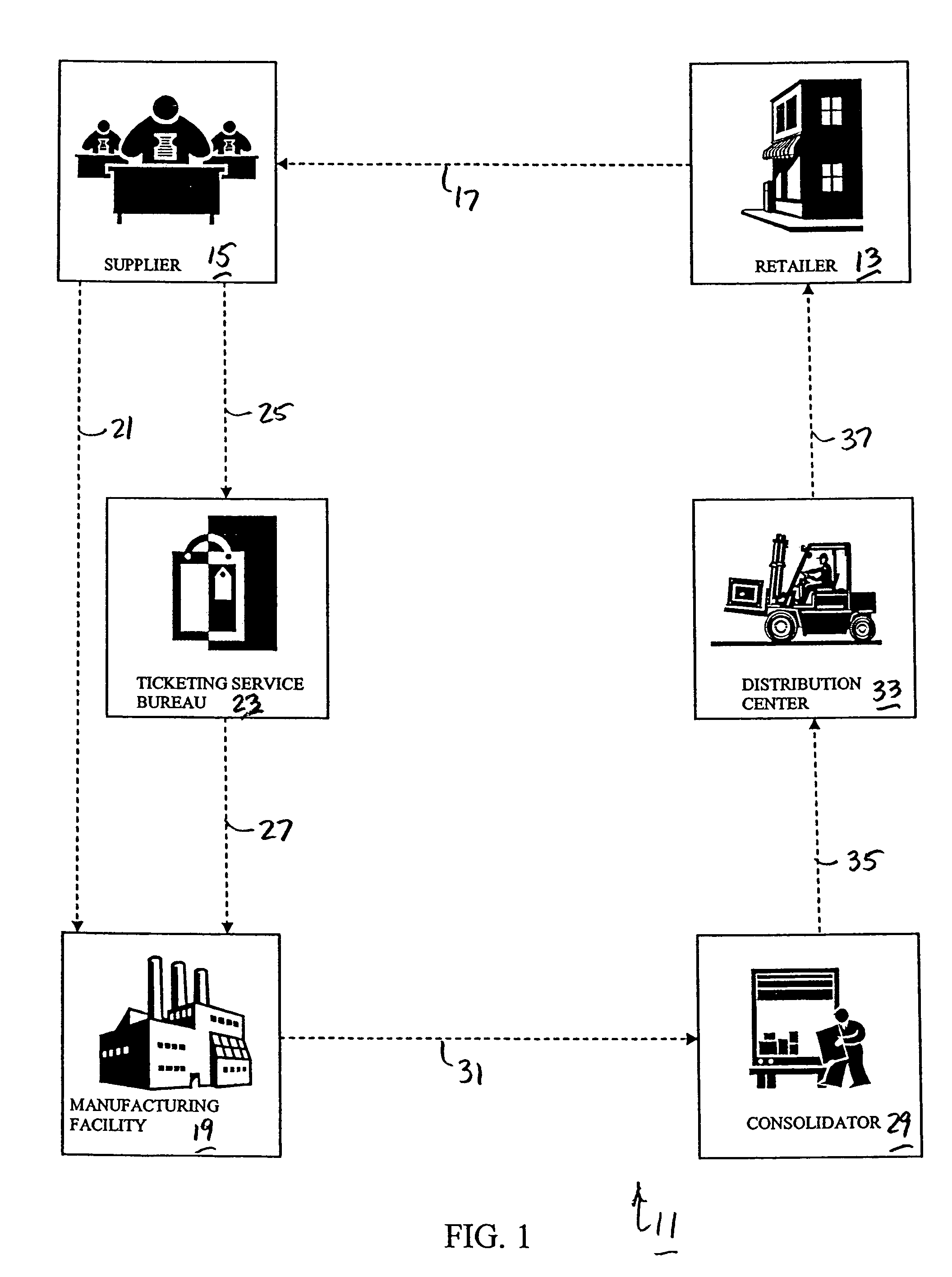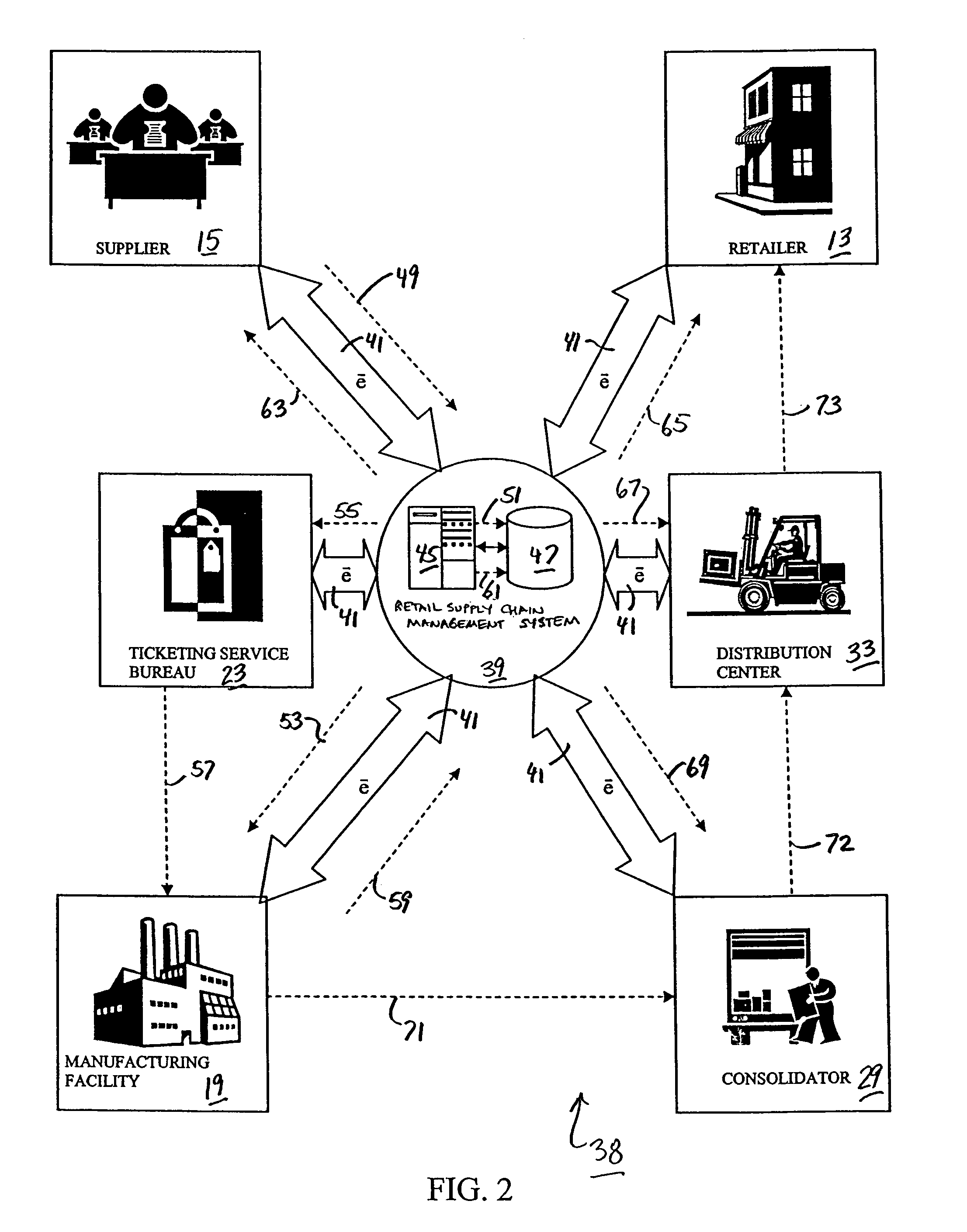Tracking system and label for use in conjunction therewith
a technology of tracking system and label, applied in the field of retail industry, can solve the problems of inability to absorb the production costs of individual label printing, sorting, packing and shipping, and the inability to use bar code systems, and achieve the effect of reducing production costs, reducing labor costs, and reducing production costs
- Summary
- Abstract
- Description
- Claims
- Application Information
AI Technical Summary
Benefits of technology
Problems solved by technology
Method used
Image
Examples
Embodiment Construction
[0072]Referring now to FIG. 5, there is shown an article tracking system which is constructed according to the teachings of the present invention and represented generally by reference numeral 99. As will be described further below, article tracking system 99 is designed to wirelessly transmit data from a conventional RFID label (e.g., RFID label 75) to a retail supply chain management system 39.
[0073]In tracking system 99, an RFID label 75 is shown affixed to an article of commerce A. As can be appreciated, RFID label 75 is preferably programmed to include a unique identification code (e.g., using the electronic product code system) which can be retrieved using radio frequency technology.
[0074]As can be seen in FIG. 5, a bar code 100 is printed on facestock 79 of label 75. However, it should be noted that bar code 100 is not an alternative representation of the unique identification code that is programmed onto IC chip 93. Rather, bar code 100 is provided to supply data of a consid...
PUM
 Login to View More
Login to View More Abstract
Description
Claims
Application Information
 Login to View More
Login to View More - R&D
- Intellectual Property
- Life Sciences
- Materials
- Tech Scout
- Unparalleled Data Quality
- Higher Quality Content
- 60% Fewer Hallucinations
Browse by: Latest US Patents, China's latest patents, Technical Efficacy Thesaurus, Application Domain, Technology Topic, Popular Technical Reports.
© 2025 PatSnap. All rights reserved.Legal|Privacy policy|Modern Slavery Act Transparency Statement|Sitemap|About US| Contact US: help@patsnap.com



